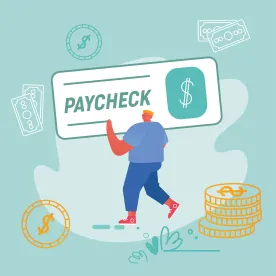The Paycheck Protection Program Flexibility Act (PPFA), passed by both houses as of June 3, makes significant changes to the Paycheck Protection Program affecting both new and existing loans, including reducing the amount of loan proceeds that must be spent on payroll costs. While the Act is designed to provide borrowers with options to maximize the benefits of the PPP loans, the PPFA will likely require significant overhaul of recently-issued SBA guidance on loan forgiveness. Additionally, the PPFA introduces major PPP changes that could cause unwary borrowers to become ineligible for forgiveness.
True to its name, the PPFA provides borrowers with flexibility by making the following changes:
- Extending the PPP to December 31, 2020 from its current end date of June 30, 2020.
- Extending the date by which borrowers are required to rehire employees to be eligible for full forgiveness from June 30 to December 31, 2020.
- Expanding the “covered period” during which borrowers must spend PPP loan proceeds from 8 to 24 weeks, although borrowers who obtained a loan prior to enactment of the PPFA may elect for the covered period to end after 8 weeks.
- The minimum loan maturity is now 5 years, increased from the 2 year maturity term implemented by the SBA and Treasury.
- The loan deferral period is extended from 6 months to 10 months.
As mentioned above, the PPFA also changes the PPP significantly by reducing the requirement that 75% of the loan proceeds be used on payroll costs. Now, only 60% will need to be used for payroll costs. Borrowers and lenders must take note, however, that meeting the 60/40 threshold is now a requirement for obtaining any loan forgiveness, whereas the SBA under the original PPP allowed for reduced forgiveness if the 75% threshold was not met. Under the PPFA, borrowers who fail to meet the 60% threshold will be deemed ineligible for loan forgiveness. It remains to be seen, however, whether the SBA and Treasury will follow the text of the bill - cutting off all forgiveness if the threshold is not met - or keep the current forgiveness reduction formula in place. In this regard, a co-sponsor of the PPFA, Rep. Chip Roy, stated that the intent of the bill was to maintain the reduced forgiveness aspect.
The Act also codifies the SBA guidance that borrowers will not have their forgiveness amounts reduced for not rehiring employees if the employees decline to return to work. Additionally, borrowers are not penalized if they are unable to hire similarly qualified employees for unfilled positions, or are unable to return to the same level of business activity due to COVID-19. Borrowers must be able to provide documentation that they qualify for these rehiring exceptions.
The PPFA applies retroactively to any PPP loan already made. Needless to say, there are many questions that will need to be resolved by SBA and Treasury guidance, such as how the PPFA affects borrowers that have already finished the currently applicable 8-week period, as well as those borrowers that have already rehired employees based upon the June 30 deadline.






 />i
/>i

